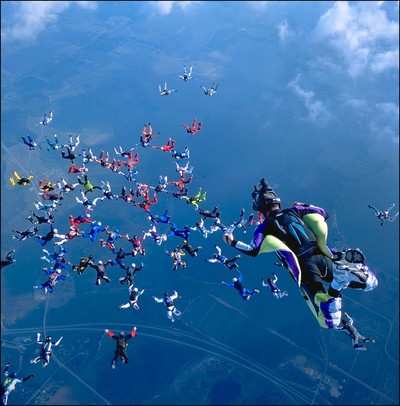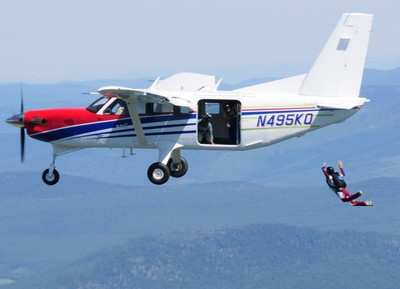15th Annual USPA Safety Day Promotes Skydiving Safety
Skydiving continues to improve its safety record, according to
new statistics released by the U.S. Parachute Association
(USPA).

In 2010, USPA recorded only 21 fatal skydiving accidents in the
U.S., indicating that the sport continues to become safer. In the
1970s, the sport averaged 42.5 skydiving fatalities per year. Since
then, the average has dropped each decade. In the 1980s, the
average was 34.1; in the 1990s, the average was 32.3, and in
2000-2009, the average dropped again to 25.8. With 21 fatalities in
2010, the annual average continues its decline.
In 2009, the USPA recorded the fewest fatal accidents in nearly
50 years-16-out of nearly 3 million jumps made by more than 32,000
USPA members and 400,000 first-time skydivers. That's the fewest
number of fatal accidents in more than four decades and a sharp
contrast to the 56 skydivers who lost their lives in 1981.
"Skydiving is a fast-paced, adrenaline-filled sport that carries
some inherent risks," said Ed Scott, Executive Director of USPA.
"But we're steadily reducing that risk-and the numbers are proving
it."

The reduction in fatalities can be attributed to safer
equipment, better training and the instructional staffs at more
than 200 USPA-affiliated drop zones across the country. "Drop
zones, instructors and safety & training advisors are
constantly working to make our sport safer. With proper training,
just about anyone can safely and responsibly enjoy our amazing
sport," continued Scott. "As a matter of fact, the most dangerous
part of skydiving is driving to the drop zone!"
With 14 fatalities, 1961-the first year records were kept-stands
as the only year with fewer deaths than 2009. USPA was considerably
smaller then with just 3,353 members, and the total number of jumps
was far less than today's roughly 3 million jumps. This record
stands as a testament to decades of strict safety standards,
training policies and programs, including a USPA Safety Day taking
place every March.

This year, the Safety Day will be held on March 12 at
USPA-affiliated drop zones and skydiving schools throughout the
country. Established in 1997, the annual nationwide safety event
focuses on making the sport safer and prepares jumpers for the year
ahead through a series of skydiving seminars and training drills
that serve as both a refresher course and an introduction to new
developments, equipment, disciplines and training methods. At
Safety Day, seasoned skydivers and rookie jumpers alike can brush
up on basic skills and learn new procedures that will keep them
safely soaring through the skies. USPA Safety Day is crucial as
thousands more Americans take to the skies each year, fueled by the
popularity of extreme sports and skydiving as a "must-do" life
experience.
USPA will also host the 2011 National Skydiving Championships,
the sport's largest and most exciting annual competition, October
26-November 5 at Skydive Arizona in Eloy, south of Phoenix.
 ANN's Daily Aero-Term (05.19.24): Back-Taxi
ANN's Daily Aero-Term (05.19.24): Back-Taxi Aero-News: Quote of the Day (05.19.24)
Aero-News: Quote of the Day (05.19.24) Aero-News: Quote of the Day (05.20.24)
Aero-News: Quote of the Day (05.20.24) ANN's Daily Aero-Term (05.20.24): Blind Speed
ANN's Daily Aero-Term (05.20.24): Blind Speed ANN's Daily Aero-Linx (05.20.24)
ANN's Daily Aero-Linx (05.20.24)





